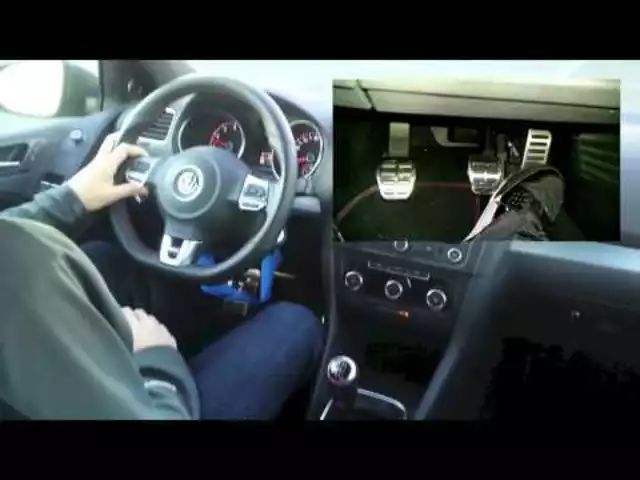Exploring the Reasons Behind the Split of CART and IndyCar Racing
In 1996, the Championship Auto Racing Teams (CART) and the IndyCar racing circuit split up, leaving the world of motorsports divided for the first time in decades. While the two racing series eventually reunited in 2008, it was not before a decade-long separation that left fans of the sport wondering why the two organizations had gone their separate ways.
At the heart of the split was a disagreement about the rules and regulations that governed each series. CART had become increasingly popular and was drawing in more spectators than ever before. This newfound success caused the organization to become less willing to compromise with the IndyCar series, which was still the more well-established organization. As a result, the two entities began to develop their own set of rules and regulations, furthering the divide between them.
The turmoil between CART and IndyCar was further exacerbated by the emergence of corporate sponsorships. Many of the big names in motorsports at the time, such as Honda and Toyota, began to heavily invest in CART, while the IndyCar series saw its sponsorships diminish. This created a divide between the two entities, making it difficult for them to work together.
The split between CART and IndyCar was further complicated by a power struggle between the two organizations. CART had become the more popular and successful racing series, and its leadership wanted to take full control of the sport. Meanwhile, the IndyCar series wanted to remain independent, which only added to the tension between the two.
The split between CART and IndyCar was further complicated by a power struggle between the two organizations. CART had become the more popular and successful racing series, and its leadership wanted to take full control of the sport. Meanwhile, the IndyCar series wanted to remain independent, which only added to the tension between the two.
Ultimately, the split between CART and IndyCar was a result of the two organizations’ inability to compromise on the rules and regulations governing the sport, as well as a power struggle between the two. While the two entities eventually reunited in 2008, it was not before a decade-long separation that left fans of the sport wondering why the two organizations had gone their separate ways.
Deconstructing the Separation of CART and IndyCar Racing: Examining the Causes and Consequences
In the world of motorsports, the split between CART and IndyCar racing is one of the most contentious in modern history. What caused this split and what were the consequences? In this blog post, we will attempt to answer these questions by examining the causes and consequences of the split between CART and IndyCar racing.
The Causes of the Split
The split between CART and IndyCar racing stemmed from a dispute between the two organizations over the direction of the sport. CART wanted to focus on international racing and expand the sport’s fan base, while IndyCar wanted to focus more on the tradition of American Open Wheel racing. These two disparate visions eventually led to a stalemate and the split of CART and IndyCar racing.
The Consequences of the Split
The split between CART and IndyCar had a number of consequences for both organizations. For IndyCar, it meant a decrease in sponsors and a reduction in the number of races. For CART, it meant a decrease in popularity and a decrease in exposure. Both organizations faced a decrease in viewership as a result of the split and the sport of open wheel racing was never quite the same.
Conclusion
The split between CART and IndyCar racing was a major event in the history of motorsports and had a lasting impact on both organizations. While there were some positive outcomes from the split, such as increased focus on international racing, the overall result was a decrease in popularity and viewership for both organizations. The legacy of the split between CART and IndyCar racing is one that continues to this day.
In the late 1990s, the two major racing leagues in North America, Championship Auto Racing Teams (CART) and the Indy Racing League (IRL or IndyCar), went their separate ways. This split has resulted in two distinct racing series that have gone on to become two of the biggest and most popular racing organizations in the world. But what led to the divorce of CART and IndyCar?
The two leagues had been racing together for years, beginning in 1979 when CART was formed by Indianapolis Motor Speedway (IMS) owner Tony George. By the mid-1990s, the two leagues had become increasingly competitive with each other, resulting in a schism in the industry. At the heart of the conflict was the issue of control. CART wanted to maintain its autonomy, while IMS wanted more control over the sport.
The conflict came to a head in 1996 when Tony George announced the formation of the IRL, a separate series that would be sanctioned by IMS. This move was highly controversial and was widely seen as a power grab by IMS. CART was outraged, and responded by forming its own series, which would eventually be known as the Champ Car World Series.
The split resulted in two distinct series, each with their own unique rules and regulations. It also resulted in a huge drop in attendance and television ratings for both leagues. IndyCar went on to become the more successful of the two, while CART eventually folded in 2008.
The divorce of CART and IndyCar was ultimately the result of a power struggle between two powerful forces in the racing world. While the two leagues might never be unified again, the split has resulted in two of the most popular racing leagues in the world.




Leave a Comments